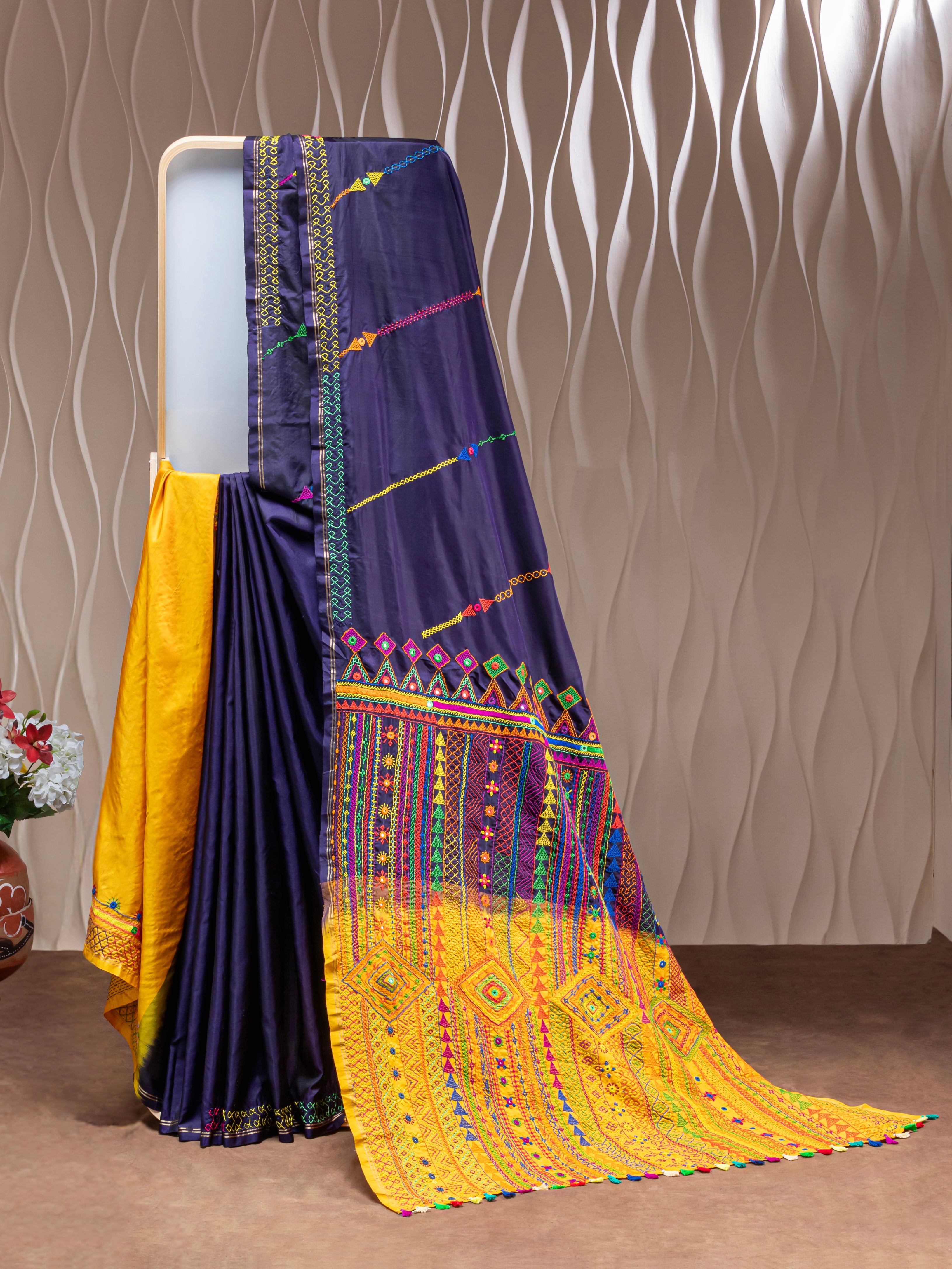
Bomkai Silk Sarees - Odisha
Aug 02, 2024
Nirmala Shivakumar
Bomkai Silk Sarees - Odisha
Introduction: The Distinctive Charm of Bomkai Silk Sarees
Bomkai Silk Sarees, also known as Sonepuri Sarees, originate from the culturally rich state of Odisha. Renowned for their intricate weaving techniques and unique blend of ikat and embroidery, these sarees are a true representation of Odisha’s rich textile heritage. This blog explores the origins, history, and craftsmanship behind Bomkai Silk Sarees, highlighting their distinct patterns, vibrant colors, and the skilled artisans who bring these masterpieces to life.
Historical Background: A Heritage of Craftsmanship
Bomkai Silk Sarees have their roots in the Bomkai village of Odisha, where they were first woven around the 8th century. Originally created for the tribal communities of Odisha, these sarees gained prominence due to their distinctive blend of traditional ikat weaving and intricate embroidery. The sarees were traditionally worn during religious ceremonies and important festivals, symbolizing cultural richness and spiritual significance. Over time, Bomkai sarees have evolved, incorporating modern designs while retaining their traditional essence.
The Artisans: Guardians of Tradition
The creation of a Bomkai Silk Saree is a meticulous process, involving highly skilled artisans who have inherited the craft from their ancestors. These weavers are primarily based in Sonepur and its surrounding areas, where the art of weaving Bomkai sarees has been passed down through generations. Each saree is woven on a handloom, requiring days or even weeks to complete. The intricate designs, characterized by their use of contrasting colors and elaborate motifs, are a testament to the artisans' dedication and skill.
Weaving Techniques: A Fusion of Art and Tradition
Bomkai Silk Sarees are renowned for their unique weaving techniques, which combine the ikat style with traditional embroidery. The sarees feature a contrast border and pallu (the end piece), which are often adorned with elaborate motifs inspired by nature, mythology, and traditional tribal art. The body of the saree typically features simpler patterns, creating a striking balance between the ornate and the understated. The use of rich, vibrant colors further enhances the visual appeal of these sarees, making them a favorite for festive occasions.
Cultural Significance: A Symbol of Odisha’s Heritage
Bomkai Silk Sarees are more than just garments; they are a symbol of Odisha’s rich cultural heritage. Traditionally, these sarees were worn by women during important religious rituals and festivals. Today, they are cherished for their elegance and are often chosen for special occasions such as weddings, cultural events, and festivals. The intricate patterns and vibrant colors of Bomkai sarees represent the diversity and richness of Odisha’s cultural landscape.
The Fabric and Colors: A Canvas of Rich Textures
The silk used in Bomkai sarees is of the highest quality, known for its durability and lustrous sheen. The colors used in these sarees are typically vibrant, with a preference for deep reds, rich blacks, and vibrant blues, often contrasted with gold or silver thread work. The pallu is usually the focal point of the saree, showcasing elaborate patterns that are often inspired by nature, mythological stories, and traditional tribal art forms.
Geographical Significance: The Heartland of Bomkai Weaving
The Bomkai sarees are primarily woven in the districts of Subarnapur (Sonepur), Bargarh, and Sambalpur in Odisha. These areas are known for their rich textile traditions and are home to a large community of weavers who specialize in handloom weaving. The sarees produced in these regions are known for their high quality and intricate designs, making them highly sought after both in India and abroad.
Evolution and Modern Appeal: Tradition Meets Contemporary Fashion
While Bomkai Silk Sarees are steeped in tradition, they have also evolved to meet modern fashion trends. Designers today are experimenting with new color combinations, motifs, and styles, making these sarees appealing to a younger generation. Despite these modern influences, the core elements of Bomkai sarees—such as their intricate weaving and vibrant colors—remain unchanged, ensuring that the sarees retain their timeless appeal.
Conclusion: A Legacy Woven in Silk
Bomkai Silk Sarees are not just a testament to the rich textile heritage of Odisha; they are also a celebration of the skill and creativity of the artisans who weave them. Owning a Bomkai saree is akin to owning a piece of history, a legacy that has been passed down through generations. Whether worn for a wedding, a festival, or any special occasion, a Bomkai saree exudes elegance and grace, making it a treasured addition to any wardrobe.

